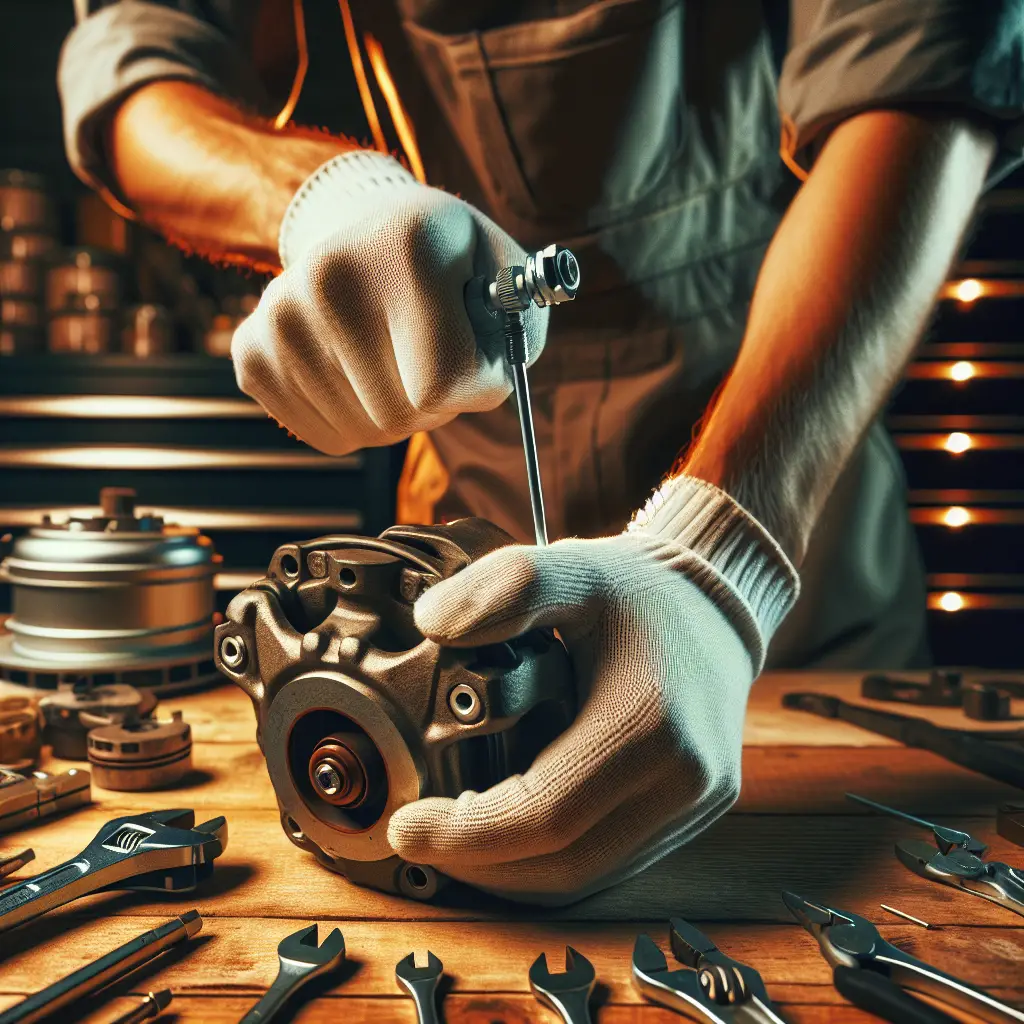How to Get Brake Caliper Piston Back In: A Step-by-Step Guide
Brakes are unarguably one of the most crucial components of your vehicle, and maintaining them is key to ensuring your safety on the road. Over time, brake calipers, an essential part of your vehicle’s braking system, may require maintenance or replacement. One common maintenance task you might encounter is retracting the brake caliper piston when replacing brake pads or servicing your brake calipers.
If you’re taking the DIY route, you might be wondering how to get a brake caliper piston back in without causing damage to the piston or the caliper itself. Don’t worry, we’ve got you covered. In this comprehensive guide, we’ll walk you through the process step-by-step.
##Understanding Brake Calipers
Before diving into the process, it’s important to understand what a brake caliper is and how it functions. Brake calipers are an integral part of the disc braking system, which clamps the brake pads against the rotor to create friction and slow down the vehicle. The brake caliper piston is what presses the pads against the rotor. Over time, these pistons can become hard to move due to dirt build-up or corrosion.
##Tools and Materials Needed
- Car jack and jack stands
- Lug wrench or impact gun
- C-clamp or brake caliper tool
- Brake cleaner
- Clean rags
- High-quality brake fluid (optional)
- New brake pads (optional)
##Step-by-Step Guide to Retracting Brake Caliper Pistons
###Step 1: Safety First
Start by parking your car on a flat, stable surface and apply the parking brake. Place wheel chocks around the wheels to ensure the vehicle remains stable while you’re working on the brakes.
###Step 2: Remove the Wheel
Using a lug wrench or impact gun, loosen the lug nuts on the wheel covering the brake caliper you need to work on. Lift your vehicle using a car jack and secure it with jack stands. Remove the lug nuts entirely and take off the wheel.
###Step 3: Locate the Brake Caliper and Brake Pads
The brake caliper is located over the rotor. Before you can retract the piston, you need to remove the brake pads. There are a few bolts holding the caliper in place. Using the appropriate tool, remove these bolts and gently slide the caliper off the rotor.
###Step 4: Retract the Piston
Now that you have access to the piston, it’s time to retract it. This step varies depending on whether you have a single or dual-piston caliper. Most vehicles will come with a single piston, which you can retract using a C-clamp by placing the clamp over the piston and tightening it slowly, pushing the piston in.
If you have a dual-piston caliper, this process may require a special tool to retract both pistons simultaneously. Follow the tool’s instructions carefully to avoid any missteps.
###Step 5: Clean and Inspect
With the piston retracted, take the opportunity to clean the area with brake cleaner and inspect it for any signs of damage or wear. This is an excellent time to replace your brake pads if necessary.
###Step 6: Reassemble the Brake Components
After the piston has been successfully retracted and any other maintenance tasks are completed, reassemble the brake components in the reverse order that you removed them. Make sure everything is tightened to the manufacturer’s specifications.
###Step 7: Refill Brake Fluid and Test
Check the brake fluid level and top it off with a high-quality brake fluid if necessary. Pump the brake pedal to ensure the caliper piston and brake pads are seated properly. The pedal should feel firm when pressed; if not, you may need to bleed the brakes to remove any air from the system.
##Conclusion
Retracting a brake caliper piston is a straightforward process, but it does require attention to detail and proper tools. Always ensure your safety and the safety of your vehicle by following these steps carefully. If at any point you feel uncomfortable or unsure about performing this procedure, it’s best to consult with a professional mechanic.
For more information on brake maintenance and safety, you can visit the National Highway Traffic Safety Administration’s website (NHTSA) or consult your vehicle’s owner’s manual.
Remember, vehicle maintenance can be a rewarding DIY project, but never compromise on safety for the sake of saving a few bucks. It’s better to be safe than sorry!
##FAQs
Q: Can I use a C-clamp to retract a dual-piston caliper?
A: Using a C-clamp might not be effective for dual-piston calipers, as you risk applying uneven pressure which can damage the pistons.
Q: What should I do if the piston won’t retract?
A: Pistons that won’t retract could be a sign of a seized caliper. This may require professional assistance to repair or replace the caliper.
Q: Do I need to bleed the brakes after retracting the piston?
A: It isn’t usually necessary to bleed the brakes after simply retracting the piston. However, if you open the hydraulic system or notice a spongy brake pedal afterwards, bleeding the brakes is required.
Remember, proper vehicle maintenance is key to your safety on the road. If you ever feel unsure about any process, it’s always a good idea to contact a certified mechanic. Happy DIY-ing, and safe driving!

